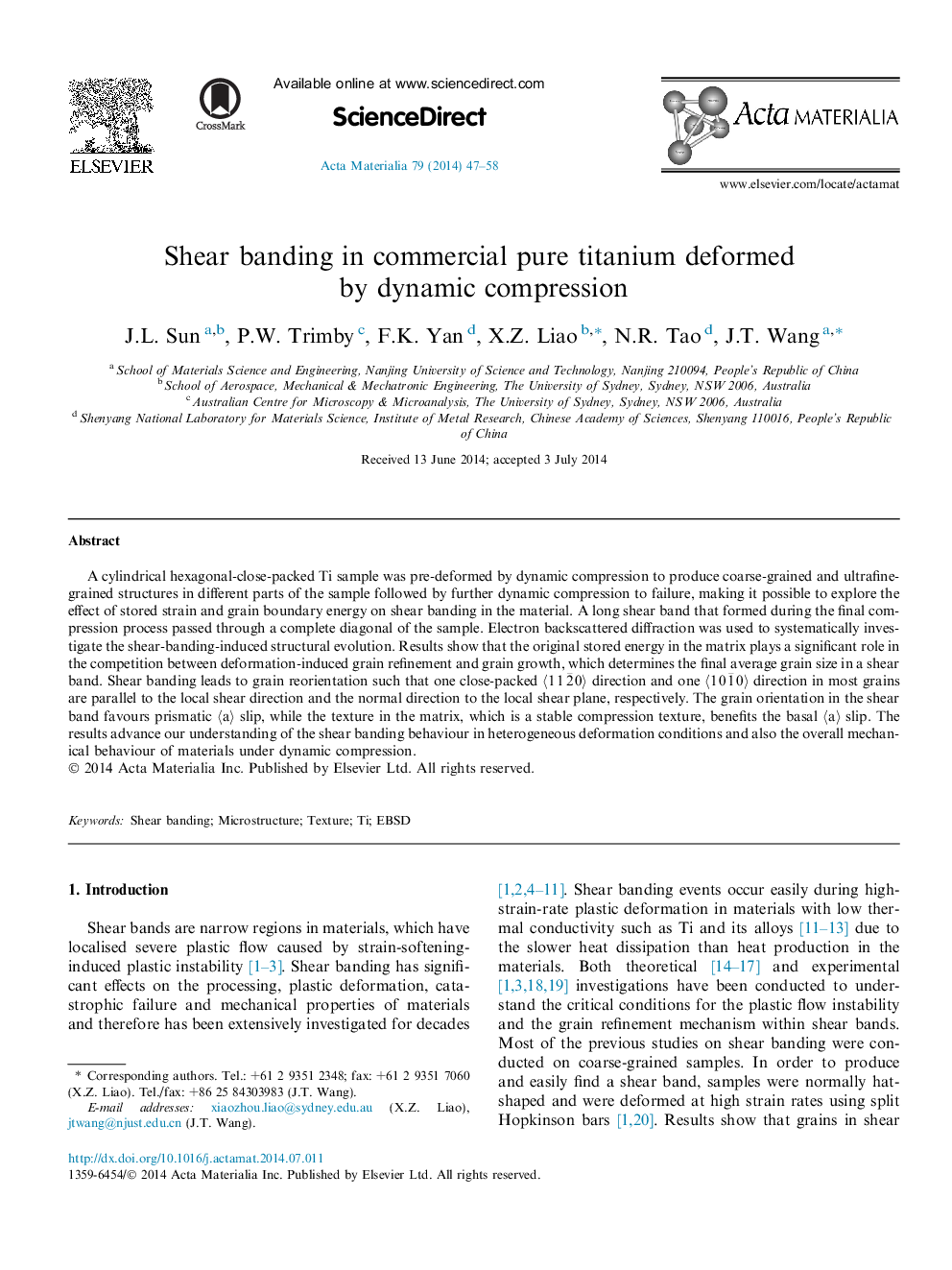| Article ID | Journal | Published Year | Pages | File Type |
|---|---|---|---|---|
| 7880997 | Acta Materialia | 2014 | 12 Pages |
Abstract
A cylindrical hexagonal-close-packed Ti sample was pre-deformed by dynamic compression to produce coarse-grained and ultrafine-grained structures in different parts of the sample followed by further dynamic compression to failure, making it possible to explore the effect of stored strain and grain boundary energy on shear banding in the material. A long shear band that formed during the final compression process passed through a complete diagonal of the sample. Electron backscattered diffraction was used to systematically investigate the shear-banding-induced structural evolution. Results show that the original stored energy in the matrix plays a significant role in the competition between deformation-induced grain refinement and grain growth, which determines the final average grain size in a shear band. Shear banding leads to grain reorientation such that one close-packed ã112¯0ã direction and one ã101¯0ã direction in most grains are parallel to the local shear direction and the normal direction to the local shear plane, respectively. The grain orientation in the shear band favours prismatic ãaã slip, while the texture in the matrix, which is a stable compression texture, benefits the basal ãaã slip. The results advance our understanding of the shear banding behaviour in heterogeneous deformation conditions and also the overall mechanical behaviour of materials under dynamic compression.
Related Topics
Physical Sciences and Engineering
Materials Science
Ceramics and Composites
Authors
J.L. Sun, P.W. Trimby, F.K. Yan, X.Z. Liao, N.R. Tao, J.T. Wang,
